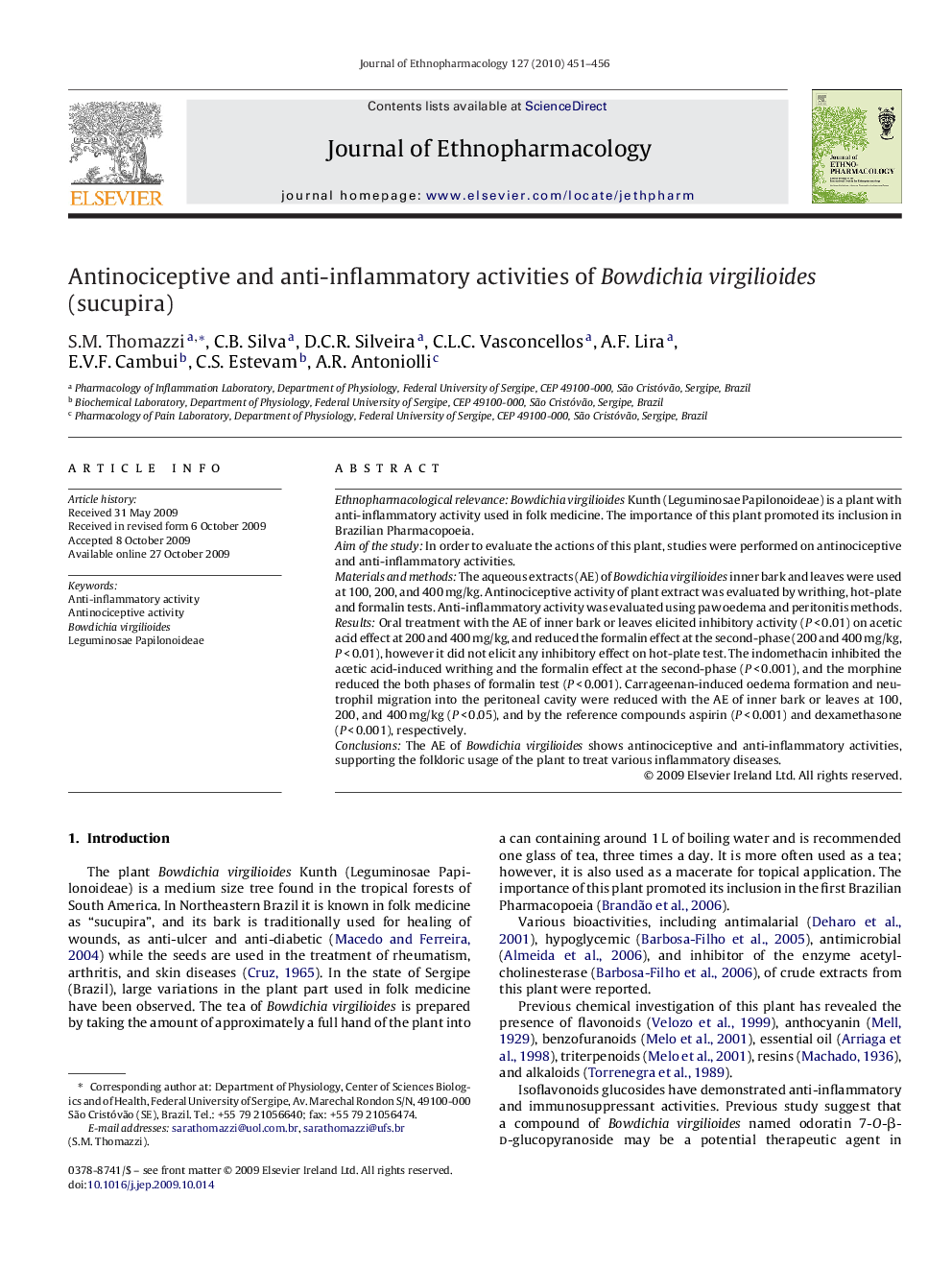| Article ID | Journal | Published Year | Pages | File Type |
|---|---|---|---|---|
| 2545915 | Journal of Ethnopharmacology | 2010 | 6 Pages |
Ethnopharmacological relevanceBowdichia virgilioides Kunth (Leguminosae Papilonoideae) is a plant with anti-inflammatory activity used in folk medicine. The importance of this plant promoted its inclusion in Brazilian Pharmacopoeia.Aim of the studyIn order to evaluate the actions of this plant, studies were performed on antinociceptive and anti-inflammatory activities.Materials and methodsThe aqueous extracts (AE) of Bowdichia virgilioides inner bark and leaves were used at 100, 200, and 400 mg/kg. Antinociceptive activity of plant extract was evaluated by writhing, hot-plate and formalin tests. Anti-inflammatory activity was evaluated using paw oedema and peritonitis methods.ResultsOral treatment with the AE of inner bark or leaves elicited inhibitory activity (P < 0.01) on acetic acid effect at 200 and 400 mg/kg, and reduced the formalin effect at the second-phase (200 and 400 mg/kg, P < 0.01), however it did not elicit any inhibitory effect on hot-plate test. The indomethacin inhibited the acetic acid-induced writhing and the formalin effect at the second-phase (P < 0.001), and the morphine reduced the both phases of formalin test (P < 0.001). Carrageenan-induced oedema formation and neutrophil migration into the peritoneal cavity were reduced with the AE of inner bark or leaves at 100, 200, and 400 mg/kg (P < 0.05), and by the reference compounds aspirin (P < 0.001) and dexamethasone (P < 0.001), respectively.ConclusionsThe AE of Bowdichia virgilioides shows antinociceptive and anti-inflammatory activities, supporting the folkloric usage of the plant to treat various inflammatory diseases.
Graphical abstractBowdichia virgilioides Kunth (Leguminosae Papilonoideae) is a plant with anti-inflammatory activity used in folk medicine. The aqueous extracts (AE) of Bowdichia virgilioides inner bark and leaves were used at 100, 200, and 400 mg/kg. Oral treatment with the AE of inner bark or leaves elicited inhibitory activity (P < 0.01) on acetic acid effect at 200 and 400 mg/kg, and reduced the formalin effect at the second-phase (200 and 400 mg/kg, P < 0.01), however it did not elicit any inhibitory effect on hot-plate test. Carrageenan-induced oedema formation and neutrophil migration into the peritoneal cavity were reduced with the AE of inner bark or leaves at 100, 200, and 400 mg/kg (P < 0.05). The AE of Bowdichia virgilioides shows antinociceptive and anti-inflammatory activities, supporting the folkloric usage of the plant to treat various inflammatory diseases.Figure optionsDownload full-size imageDownload as PowerPoint slide
